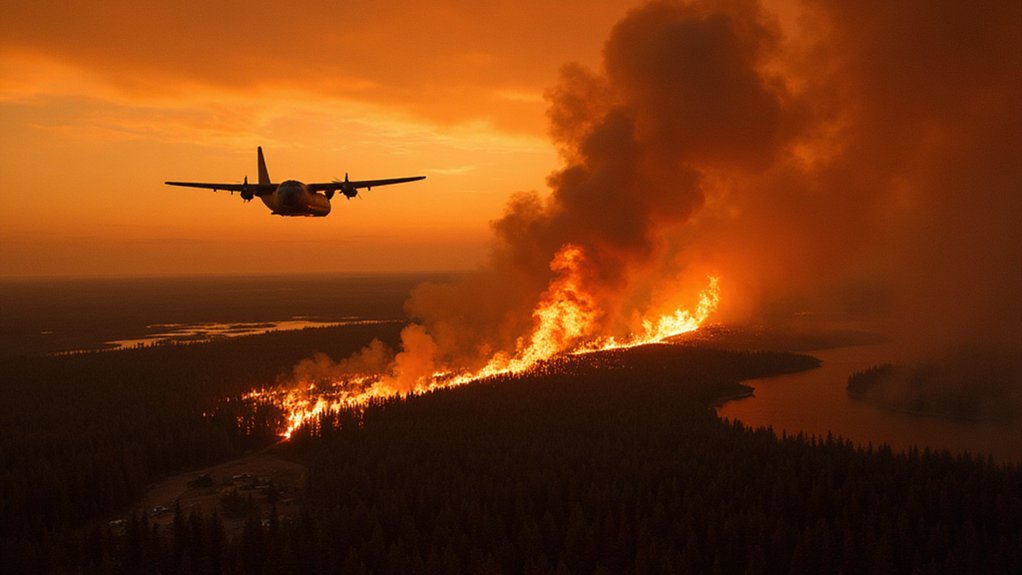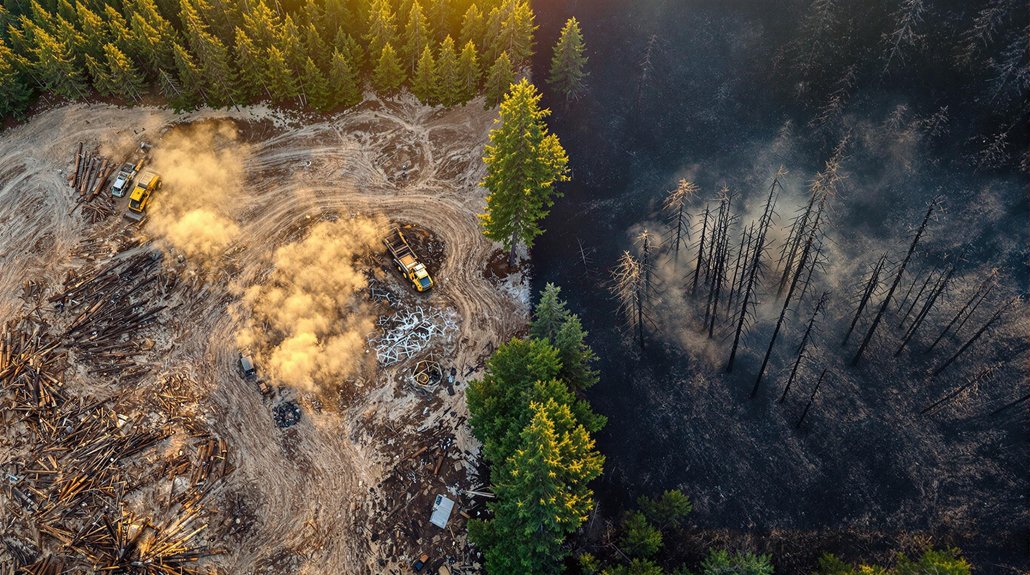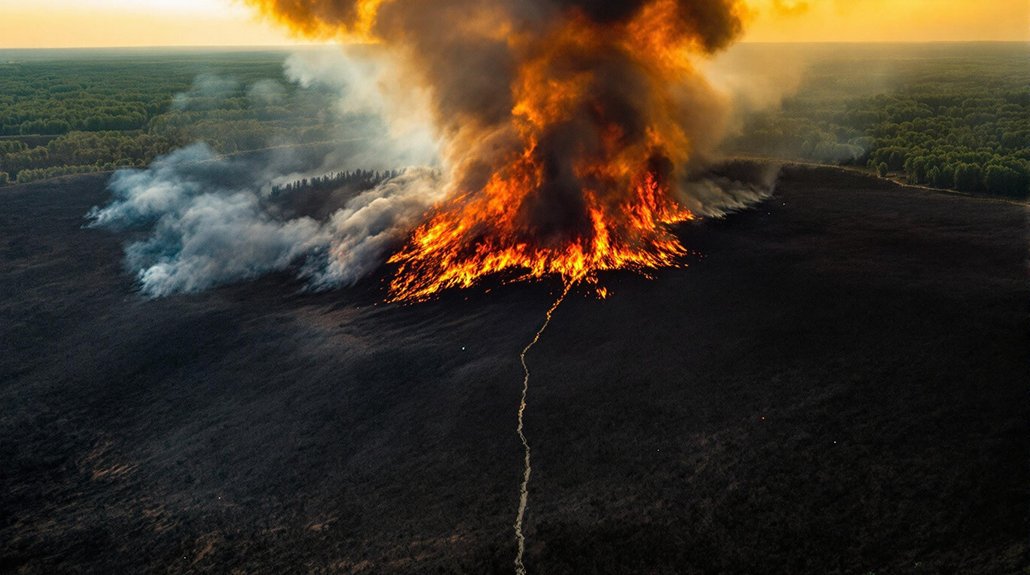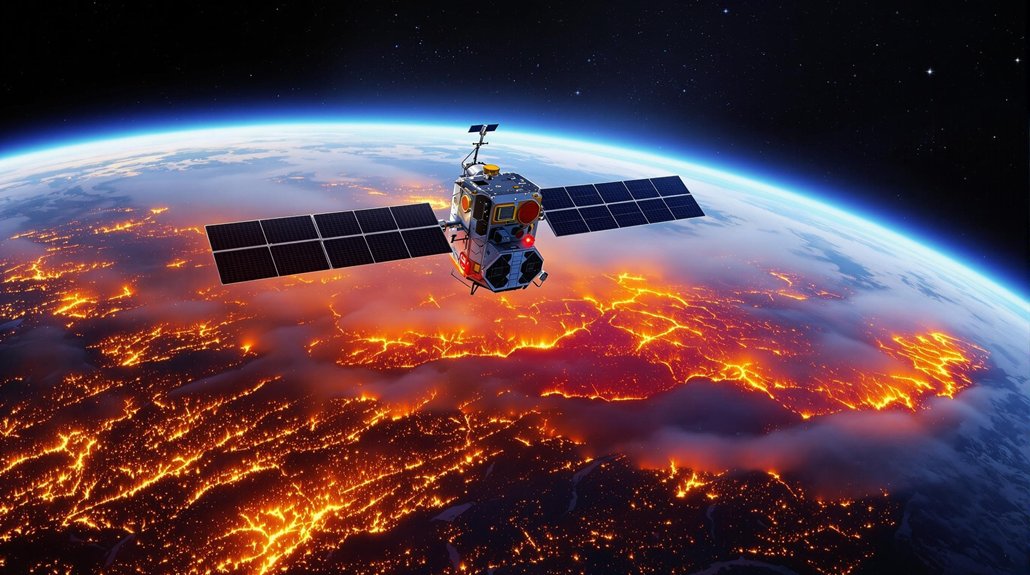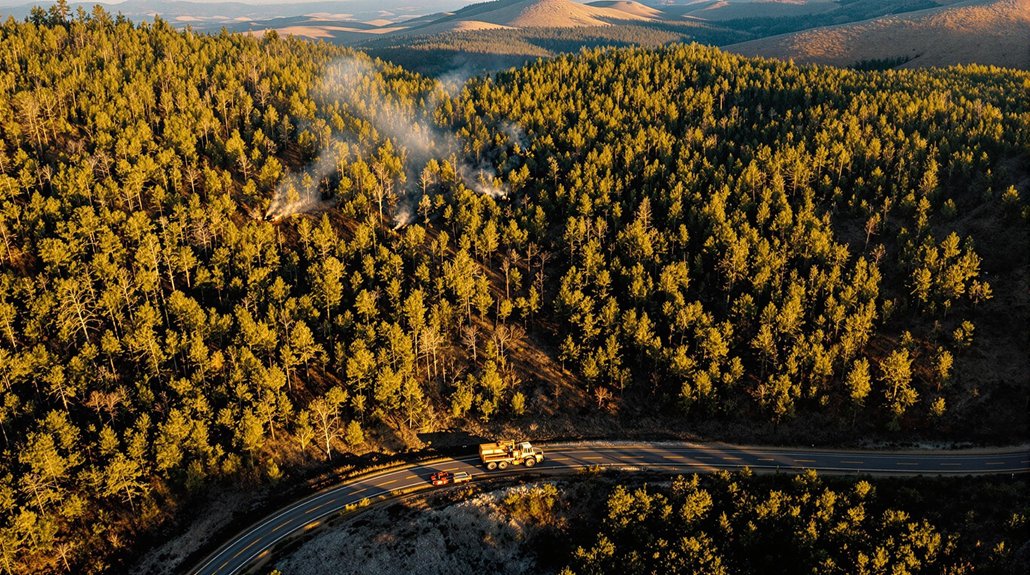Northwestern Ontario is burning. The Canadian military scrambled Hercules aircraft to evacuate thousands as wildfires consumed over 1,500 square kilometers near Red Lake. Sandy Lake First Nation’s 3,000 residents face a monster blaze just six kilometers away. Prime Minister Carney mobilized everything, calling it Ontario’s largest wildfire response yet. The U.S. sent firefighters and equipment while smoke chokes three provinces. Toronto’s seven million are safe—for now. The fires keep marching east.
As wildfires tear through northwestern Ontario, the Canadian military scrambled Monday to evacuate a third of Sandy Lake First Nation‘s 3,000 residents. The Red Lake 12 fire near Deer Lake First Nation is completely out of control, burning across more than 1,500 square kilometers.
Another monster blaze spanning 156,346 hectares sits just six kilometers from Sandy Lake. Sandy Lake Chief Delores Kakegamic reported the wildfire had advanced rapidly, closing from 40 kilometers to just 2 kilometers from the community. The fires have been moving east like a plague. Alberta, Saskatchewan, and Manitoba got hammered first. Now Ontario’s turn. Saskatchewan and Manitoba already declared states of emergency. Over 30,000 people across the Prairie provinces have fled their homes. Fun times.
Monster blaze spans 156,346 hectares. Six kilometers from Sandy Lake. Moving east like plague.
Prime Minister Mark Carney authorized the military deployment Sunday, June 8, 2025. “We’ll mobilize every resource needed to keep Canadians safe,” he promised. Sure. The Canadian Armed Forces sent Hercules aircraft for emergency airlifts after Ontario begged for federal help.
Problem is, Sandy Lake’s airstrip is short. The planes can’t fly at full capacity. Of course. Sandy Lake sits about 600 kilometers north of Thunder Bay. No roads. Just air evacuation. This is the largest mobilization in Ontario yet.
The Canadian Interagency Forest Fire Center cranked the wildfire preparedness level to 5 on May 29. Officials call the activity “very high to extreme.” That’s government-speak for “we’re in trouble.” The Americans are helping. The USDA Forest Service sent an airtanker to Alberta on May 31.
Over 450 U.S. firefighters and support staff mobilized north. They brought sprinkler kits, pumps, hoses. The increasingly hazardous smoke presents health consequences comparable to those causing 8.1 million deaths globally from air pollution in 2021. The National Interagency Coordination Center deployed 98 personnel total as of June 8. This partnership goes back to 1982. Shared terrains, common problems, yadda yadda.
Earlier this year, Canadians helped fight fires in Southern California. Now it’s payback time. The fires are currently ravaging the sparsely populated northwest corner of Ontario. Toronto’s safe. For now. The metropolitan area’s seven million residents can sleep easy while the north burns.
Minister Eleanor Olszewski is coordinating the wildfire response. The Government Operations Centre is managing federal resources to support the evacuation efforts. Military aircraft keep flying, taking whoever they can. The fires don’t care. They just burn.
References
- https://phys.org/news/2025-06-military-aids-evacuations-canada-wildfires.html
- https://www.canada.ca/en/public-safety-canada/news/2025/06/statement-from-minister-olszewski-regarding-wildfires-in-ontario.html
- https://nationalpost.com/news/canada/canadian-armed-forces-northwestern-ontario-wildfire-evacuations
- https://www.usda.gov/about-usda/news/press-releases/2025/05/31/usda-sends-fire-resources-assist-canada-wildfire-response
- https://www.nifc.gov/fire-information/international-support
